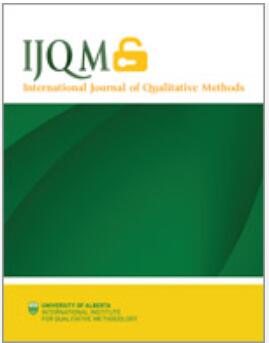在急诊科使用视频反思人种学:复杂繁忙的临床环境中的方法论挑战、解决方案和机遇
IF 3.9
2区 社会学
Q1 SOCIAL SCIENCES, INTERDISCIPLINARY
引用次数: 0
摘要
视频-反思性人种学(VRE)是一种创新的参与式研究和改进方法,包括对现场工作实践进行录像,并在反思性会议期间与参与者共同分析这些录像。这需要参与者 "放慢脚步",对日常工作实践进行反思,并抽出时间集体讨论问题。VRE 已越来越多地应用于各种不同的医疗机构。然而,急诊医疗室(AMU)却较少受到关注。急诊内科病房是医院繁忙的短期科室,病人吞吐量非常大,拥有庞大的多学科团队,病人在这里接受初步评估、诊断和治疗,然后再转到其他病房或环境。本研究旨在探讨如何在繁忙而复杂的急诊室环境中应用 VRE 作为研究和改进方法。在本文中,我们概述了在这种环境下遇到的一些方法论挑战,并讨论了如何将这些挑战转化为机遇和解决方案。然后,我们利用 VRE 核心的四项指导原则(关爱、协作、反思和创新)对我们的工作进行评估,以检验该方法是否以及如何在如此复杂和繁忙的环境中使用,同时又不失其方法的严谨性和影响力。我们展示了如何通过精心策划、不断修改数据收集方法、保持高度灵活性以适应病房的空间和时间节奏,以及对专业间和专业内的等级关系和脆弱性保持敏感,在复杂而繁忙的 AMU 环境中启动并实现 VRE 的核心原则。最后,我们分享了在其他繁忙而复杂的环境中使用 VRE 的建议。本文章由计算机程序翻译,如有差异,请以英文原文为准。
Using Video-Reflexive Ethnography on an Acute Medical Unit: Methodological Challenges, Solutions and Opportunities within a Complex and Busy Clinical Setting
Video-Reflexive Ethnography (VRE) is an innovative and participatory research and improvement methodology that involves videoing in-situ work practices and collaboratively analysing this footage with participants during reflexive sessions. This involves participants ‘slowing down’, engaging reflexively with their everyday working practices, and taking time out to discuss issues collectively. VRE has increasingly been used across a range of different healthcare settings. However, one setting that has received less attention is the Acute Medical Unit (AMU). AMUs are busy short-stay hospital departments with very high patient throughput and large multidisciplinary teams where patients receive initial assessment, diagnosis and treatment before being moved to other wards or settings. The aim of this study was to examine how VRE as a research and improvement methodology can be applied, in the busy and complex setting of an AMU. In this paper we outline some of the methodological challenges encountered in this setting and discuss how these were transformed into opportunities and solutions. Then, we evaluate our work by using the four guiding principles at the heart of VRE (care, collaboration, reflexivity and exnovation) to test if, and how, the methodology can be used in such a complex and busy setting without losing its methodological rigor and impact. We show how it is possible to initiate and achieve the core principles of VRE in the complex and busy AMU setting through careful planning, constant revision of data collection methods, remaining highly flexible and adaptable to the spatial and temporal rhythms of the ward and being sensitive to hierarchical inter- and intra-professional relationships and vulnerabilities. Finally, we share recommendations for using VRE in other busy and complex settings.
求助全文
通过发布文献求助,成功后即可免费获取论文全文。
去求助
来源期刊

International Journal of Qualitative Methods
SOCIAL SCIENCES, INTERDISCIPLINARY-
CiteScore
6.90
自引率
11.10%
发文量
139
审稿时长
12 weeks
期刊介绍:
Journal Highlights
Impact Factor: 5.4 Ranked 5/110 in Social Sciences, Interdisciplinary – SSCI
Indexed In: Clarivate Analytics: Social Science Citation Index, the Directory of Open Access Journals (DOAJ), and Scopus
Launched In: 2002
Publication is subject to payment of an article processing charge (APC)
Submit here
International Journal of Qualitative Methods (IJQM) is a peer-reviewed open access journal which focuses on methodological advances, innovations, and insights in qualitative or mixed methods studies. Please see the Aims and Scope tab for further information.
 求助内容:
求助内容: 应助结果提醒方式:
应助结果提醒方式:


